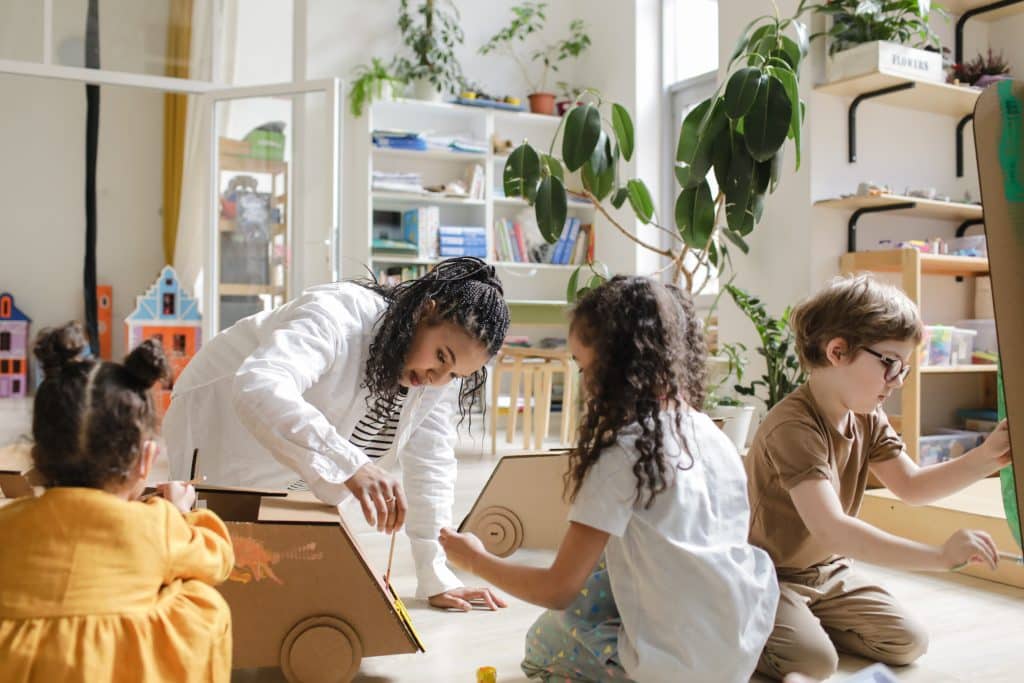Autism inclusion in schools creates a supportive environment where all students, including those with autism, can thrive academically and socially. This guide explores the benefits of inclusive education and provides practical tips for teachers.
Table of Contents
Key Takeaways:
- Autism inclusion fosters better academic performance and social skills for students with autism.
- Inclusive classrooms promote empathy, understanding, and kindness among all students.
- Teachers play a crucial role in creating supportive, diverse learning environments through personalized strategies and teamwork.
- Regular assessment and strategy adjustments are essential for ongoing student success.
What is Autism Inclusion?
Autism inclusion refers to integrating students with autism into regular classrooms with personalized support, fostering an environment where all students can learn, socialize, and thrive together. This approach emphasizes collaboration, high expectations, and a commitment to diversity.
What is Autism Inclusion?
Autism inclusion means helping students with autism and other learning differences join regular classrooms. This philosophy is based on the belief that all kids can learn and do well in a supportive and inclusive place. Here are some important parts of autism inclusion:
- Personalized help: Each student gets teaching and help that fits their needs.
- Teamwork: Teachers, parents, and other staff work together to make learning great for the student.
- High goals: All students are pushed to do their best, no matter their abilities.
- Making friends: Students with autism get chances to talk and make friends with other kids.
By understanding these key principles, schools can create a more inclusive environment that benefits all students, regardless of their abilities. Here are 5 autism teaching strategies for your classroom.
Good Things About Autism Inclusion in Schools
Autism inclusion is good for both neurodivergent kids and other students. Here are some of the best things about it:
- Better grades: Studies show that students with autism in regular classrooms often do better in school than those in separate classes.
- Learning social skills: Inclusive schools give students with autism chances to practice social skills and make friends.
- More kindness and understanding: Other students learn to see the good things and challenges of classmates with autism, making a kinder and more inclusive community.
- Getting ready for life: Inclusion helps students with autism learn skills they need to do well in a diverse and inclusive world.
With these benefits in mind, it’s clear that autism inclusion is a win-win situation for everyone involved in the educational process.
Read more: ADA Accommodations

Read more: Visual Schedules for Students With Autism
Helpful Tips for Teachers to Use Autism Inclusion
Making a classroom inclusion takes planning and teamwork. Here are some helpful tips for teachers to support autism inclusion in their classrooms:
1. Learn About Your Students
Knowing each student’s strengths, challenges, and how they learn best is important for autism inclusion. Spend time getting to know your students and work with parents and other staff to make learning plans that fit each student.
Use this information to create a supportive environment that caters to each student’s unique needs, ensuring that they feel valued and included in the classroom.
2. Make a Supportive Classroom
Make a welcoming and inclusive place by helping everyone understand and accept neurodiversity. Talk openly about autism and other learning differences, and show how to use kind words and actions.
Encourage students to ask questions and share their thoughts about neurodiversity, creating a classroom culture that values and respects all individuals.

Read more: What is the Equality Act?
3. Teach in Different Ways
Change your teaching to fit the needs of all your students. This might include using pictures, hands-on activities, and giving extra help or changes as needed.
- Use visual aids to support understanding.
- Offer hands-on activities to engage students.
- Provide extra support or accommodations when necessary.
4. Help Students Support Each Other
Put students with autism together with kind classmates who can be good examples and help during group activities. This is good for the student with autism and helps other students learn empathy and understanding.
Encourage peer mentoring and collaborative learning, fostering a sense of community and belonging among all students.
5. Check Progress and Change Strategies
Keep an eye on how students with autism are doing and change your teaching and help as needed. Work with parents and other staff to make sure each student’s needs are met well.
Regularly assess progress and adjust teaching strategies to ensure that each student continues to grow and succeed in the inclusive classroom.
Goally is a great tool for kids with ASD who are looking to improve their life and language skills. It can be used in the home or clinic, and it is tailored to the individual needs of each child. Goally is a digital therapy and teaching assistant that can help kiddos with autism spectrum disorder (ASD). Goally can help children with a variety of tasks, including:
- Learning New Skills: Goally’s video classes helps children learn new skills, such as: how to follow directions, how to interact with peers, and how to make a sandwich.
- Increased Communication: Goally helps children effectively communicate wants and needs while also teaching them their first 50 words, allowing children to participate in the world around them.
- Behavior Management: Goally helps children manage their behavior, both in the classroom and at home by rewarding positive behaviors created by parents and teachers.
Goally’s distraction-free kid’s tablet can be used as a therapy tool to help teach executive function, language, emotional regulation, finger dexterity skills, and more!
Autism inclusion in schools is good for students with autism, other students, and teachers too. By using this approach, schools can make a more inclusive and kind place for all kids to learn and grow. Let’s work together to make the most of autism inclusion and change education for neurodivergent kids.
Helpful Resources
FAQ’s About Autism Inclusion
What is autism inclusion?
Autism inclusion means integrating students with autism into regular classrooms with personalized support.
Why is autism inclusion important?
Autism inclusion fosters social skills and academic growth in a diverse learning environment.
How can teachers support autism inclusion?
Teachers can support autism inclusion by adapting teaching methods and creating an accepting classroom culture.
What are the benefits of autism inclusion for neurotypical students?
Autism inclusion helps neurotypical students develop empathy and understanding toward their peers with autism.
What strategies help in autism inclusion?
Effective strategies include personalized support, peer mentoring, and regular assessment of student progress.
This post was originally published on 05/02/2023. It was updated on 08/21/2024.
Emily is a seasoned blog writer for Goally, leveraging her extensive background in child psychology and special education to provide valuable insights and resources for parents. Her commitment to understanding and addressing the unique needs of these children, combined with her expertise in educational strategies, makes her a credible and empathetic voice for families.






